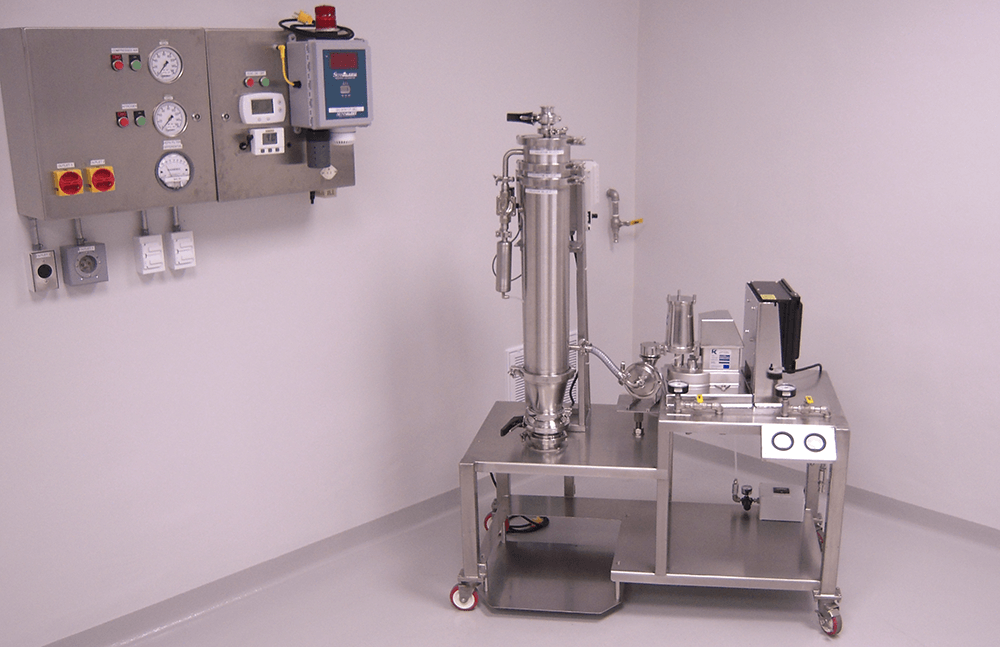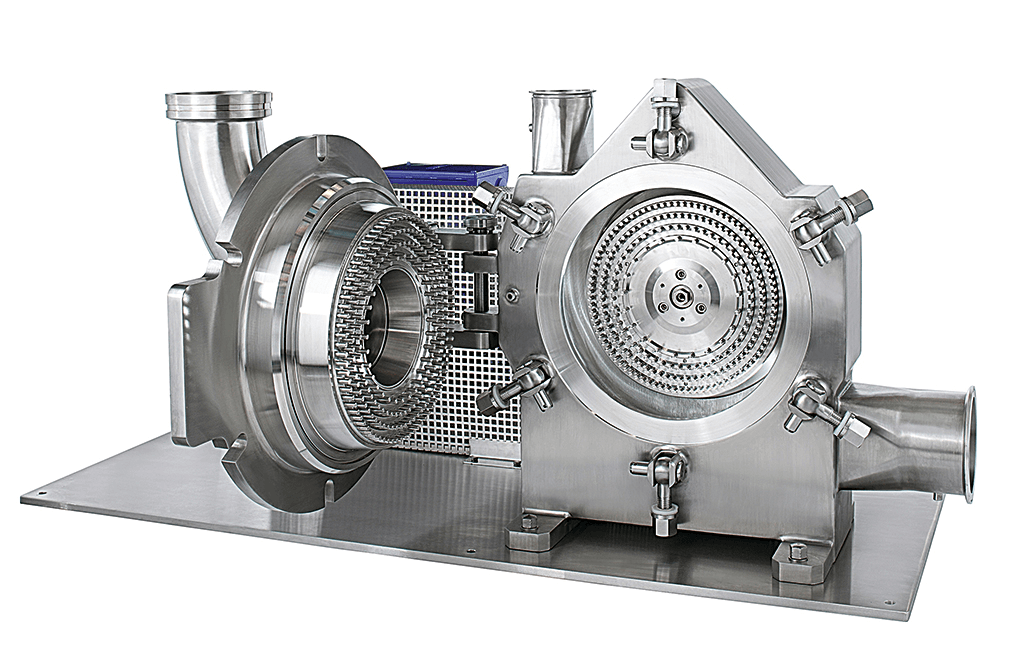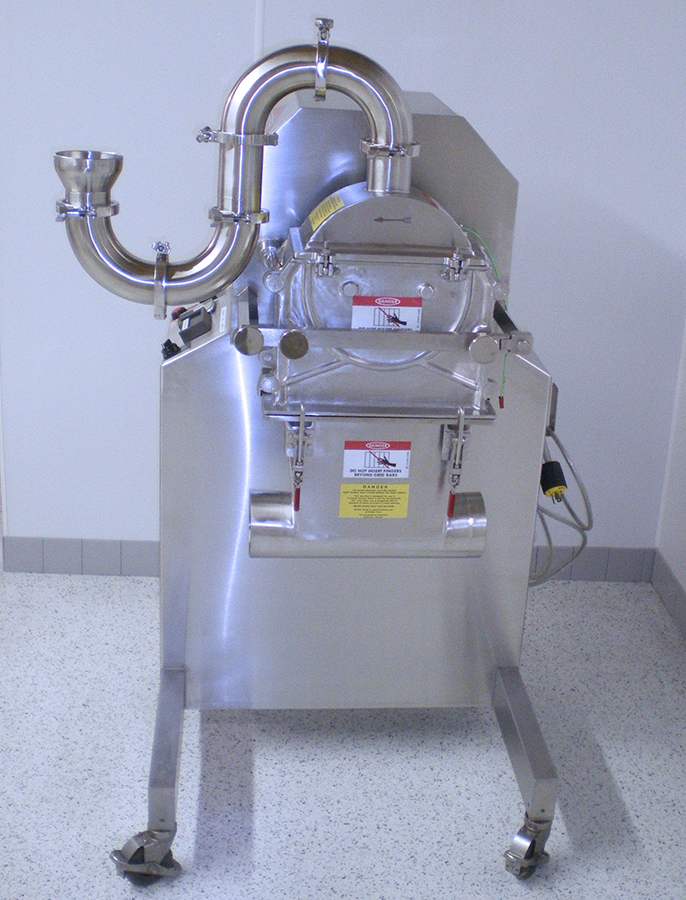Reduction
Microsize delivers a full range of mechanical milling and micronization technologies to control the particle size within the desired ranges from several hundred microns down to single digit micron averages depending on client needs. Our particle size reduction services span early development through multi-ton commercial supplies.
Jet
Milling
Attributes
- Narrow, superfine & reproducible PSD curves < 10 microns are achievable
- Ambient processing as defined by Joules Thompson effect
- High yield and high throughput
- Microsize-designed mills allow for rapid customization to meet client needs
Mechanism
A compressed gas source (air or nitrogen) is used to accelerate particles to supersonic speeds in a tornado-like flow path within the grinding chamber of the mill. Centrifugal force directs the large unmilled particles to the outside circumference of the chamber. As particles travel in a circular path, particle on particle attrition occurs reducing particle size to superfine levels. Particles exit when small enough that drag force from the exiting gas overcomes the centrifugal force retaining the smaller (lower mass) particles within the mill. Mill pressure (particle acceleration) and feed rate (amount of particles within grinding chamber at a given time) can be varied to influence resulting particle size
Pin
Milling
Attributes
- Higher tip speeds and shear forces than other mechanical milling approaches for finer outputs
- Preferred and most economical choice when distributions of 100-400 microns is acceptable
- Ideal for delumping (soft) and creating free flowing powder output
- Ideal for variety of softer excipients under a few millimeters in input size and crystalline materials
Pin
Milling
Mechanism
Material is fed into the center of a grinding chamber with several layers of concentric pins from opposing plate surfaces, one stationary and one rotating. Particles migrate from the center to the outer circumference where the pins are progressively spaced closer to each other. Repeated impacts and shear attrition occurs to the feed material and increases as material flows to the outer circumference of pins . Once small enough, particles exit through a mesh screen. Rotational speed of the pins, pin design, and screen mesh pore size can be varied to influence output size of the particles created.
Mechanism
Material is fed into the center of a grinding chamber with several layers of concentric pins from opposing plate surfaces, one stationary and one rotating. Particles migrate from the center to the outer circumference where the pins are progressively spaced closer to each other. Repeated impacts and shear attrition occurs to the feed material and increases as material flows to the outer circumference of pins . Once small enough, particles exit through a mesh screen. Rotational speed of the pins, pin design, and screen mesh pore size can be varied to influence output size of the particles created.
Hammer
Milling
Attributes
- Preferred and most economical choice when distributions of several hundred microns is acceptable (300-900 microns)
- Ideal for delumping (hard or soft) and creating a free flowing powder output
- Ideal for hard, difficult to grind materials such as resins or polymeric excipients
Mechanism
Material is fed into a grinding chamber where a series of spinning blades impact particles creating various sheer forces against the chamber surfaces and/or direct particle fracture resulting in size reduction. Screen mesh at the mill outlet, rotational speed of the blades and blade design can be varied to influence the size of the particles created.



